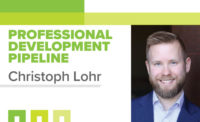Safeguarding water has become a focal point of international discussions. The World Health Organization estimates 844 million people lack access to basic drinking water. According to the 2018 United Nations World Water Development Report:
- 2.1 billion people lack access to safely managed drinking water services;
- More than 80% of the wastewater generated by society flows back into the environment without being treated or reused; and
- The number of people at risk from floods is projected to rise from 1.2 billion today to around 1.6 billion in 2050 — nearly 20% of the world’s population.
Conformity assessment, which includes testing and periodic inspections, is critical to ensuring safe water for residents around the world. I have had the pleasure of being involved in the conformity assessment arena for years. The more time I spend in the arena, the more I realize the importance of accreditation.
As president of the conformity assessment leg of the International Code Council, it is my pleasure to report that ICC-ES is accredited by the appropriate bodies in the U.S. and Canada. The Plumbing, Mechanical and Gas Division of ICC-ES (ICC-ES PMG) is further accredited by Entidad Mexicana de Acreditacion (EMA) for Mexico. This allows manufacturers of such products to come to ICC-ES PMG for all of their certification needs in North America.
But why has ICC-ES been so persistent in receiving such accreditations? One obvious reason is that such accreditations are required by certain countries in order for the certification generated by the conformity assessment bodies to be accepted. But there is more to this than just the requirements by the governments.
The standard for conformity: The assessment body certifying products, processes and services is ISO/IEC 17065. The first edition of this standard was published in 2012, and it is the standard that accrediting bodies use to accredit certifying bodies. Now, let us take a look at the requirements within this standard.
General requirements: Under this section, there are specific requirements regarding legal responsibilities of the body, the need for a mark of conformity, management of impartiality, liability insurance, non-discriminatory policies and procedures, and confidentiality. There are a few more requirements within this section.
Structural requirements: ISO/IEC 17065 requires a clear organization structure for certifying bodies, which includes a number of requirements, not least of which are the competence of the personnel, responsiveness to complaints, and requirements for evaluation, review and decisions on certification.
Resources for evaluation: This section of the standard references the requirements for internal and external resources, which are crucial for certifying products.
Process requirements: This is where the requirements for application, review, evaluation, certification decisions, documentation, a directory and surveillance come in. The surveillance activities are required to ensure continuous compliance. This is a very important requirement within this document.
Management system requirements: This section addresses document control, management review and internal audits.
The above is just a synopsis of the requirements within the aforementioned document, but it depicts the important requirements in order to emphasize the clear need for certifying bodies to not only be in compliance with the document, but be accredited to the requirements of this document.
Another important issue to pay attention to is that just because a certifying body is accredited, it does not mean it has carte blanche to certify any and every product. Accrediting bodies keep records of the scope of accreditation for every certifying body that is accredited. The reporting of the scope of accreditation is different based upon the wishes of the accrediting bodies.
However, it is important to pay very close attention to the scope of accreditation for every certification body before using their listing certificates or evaluation reports. There are certifying bodies that certify or evaluate products to standards or criteria that are not in their scope of accreditation. It is essential to ascertain the breadth of the scope, even if the users of the certifications or evaluation reports — such as inspectors and code officials — have to directly contact the accrediting bodies for verification of the scope of accreditation.
In the built environment, life safety matters. Therefore proper checking of the accreditation of the certification bodies as well as their scope of certification is highly recommended by all.



